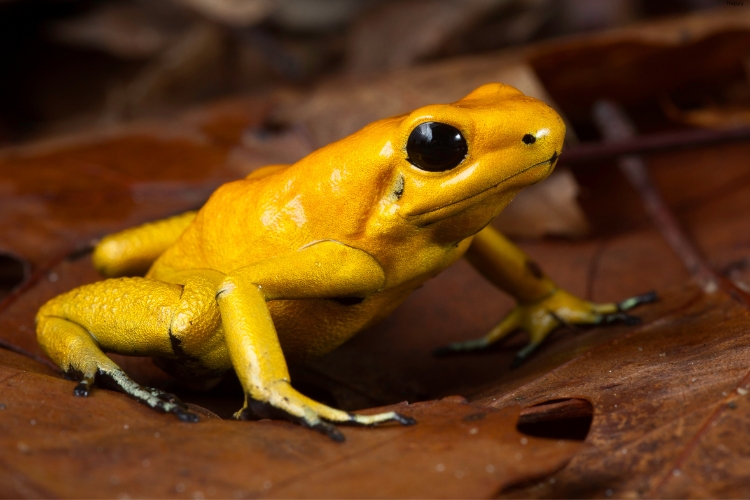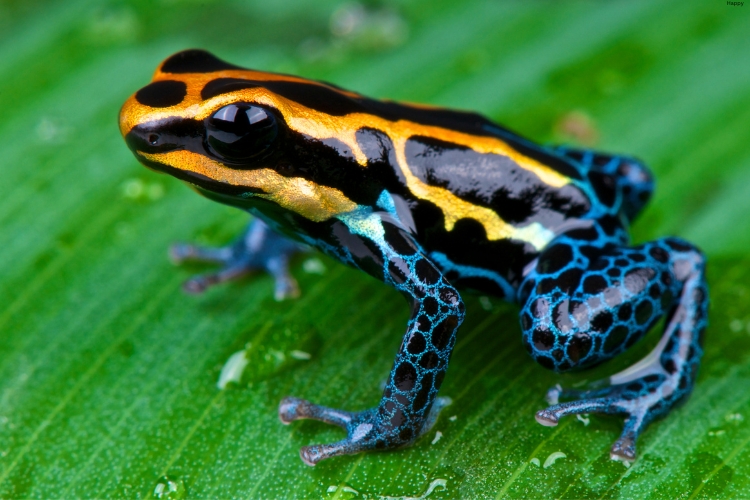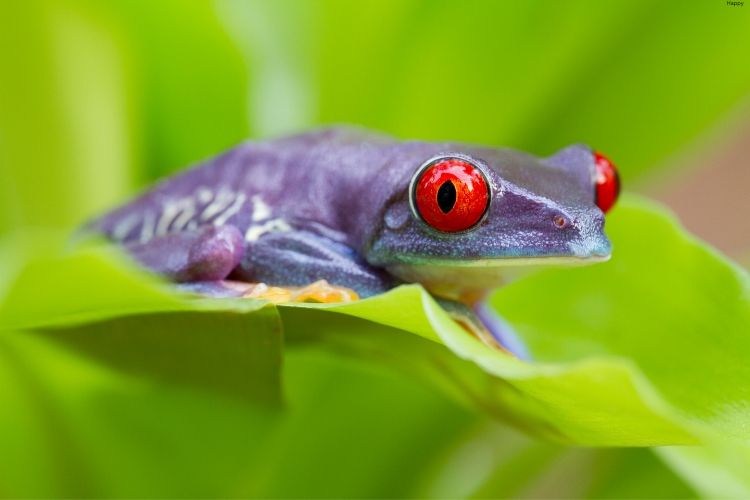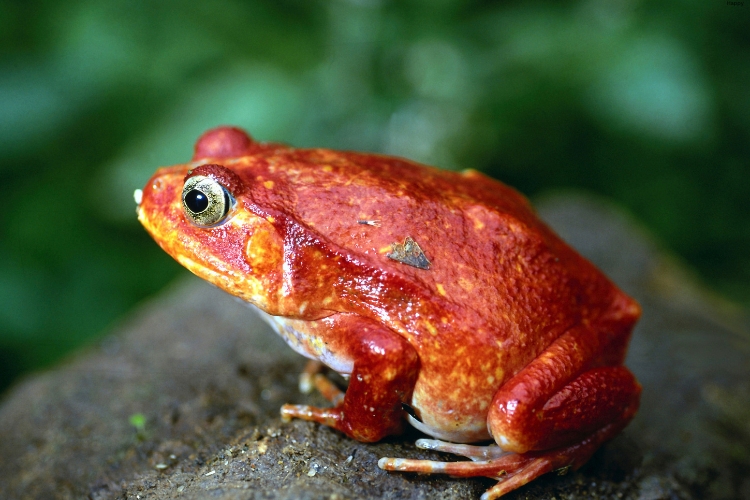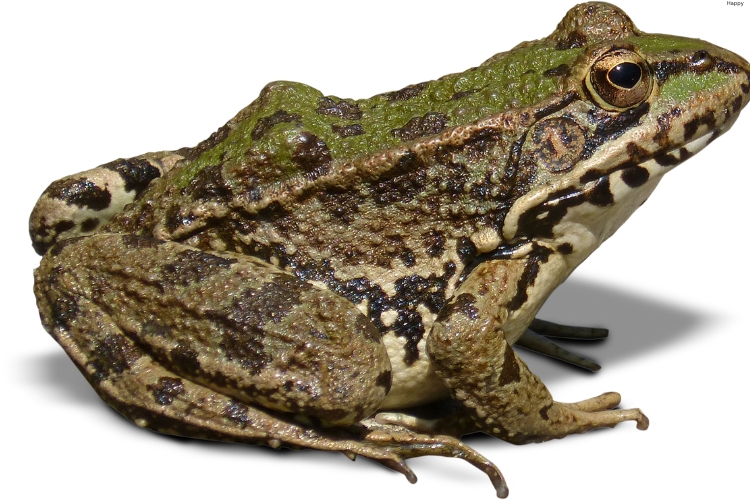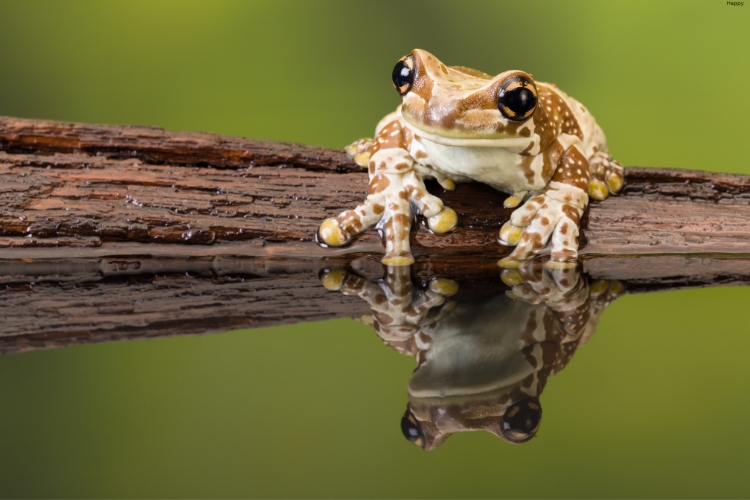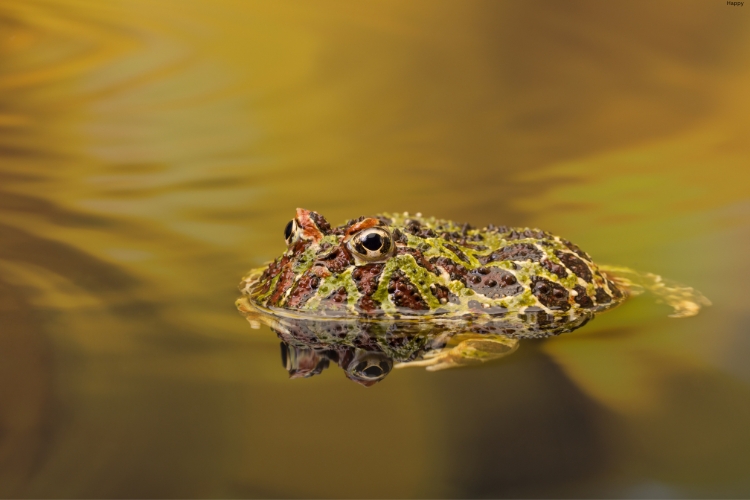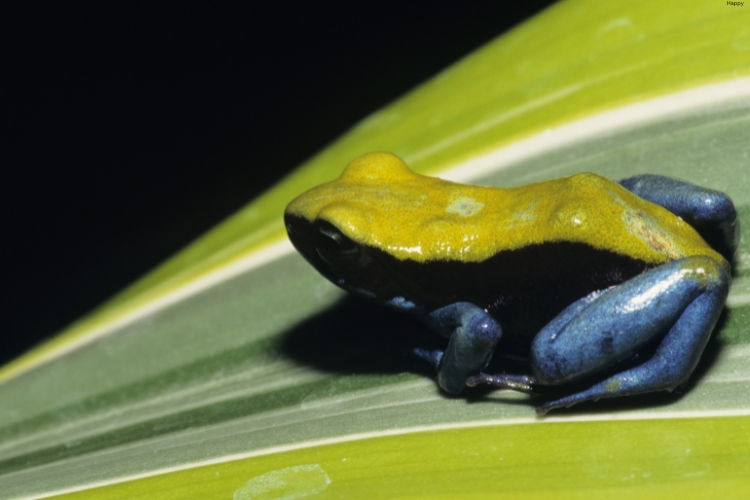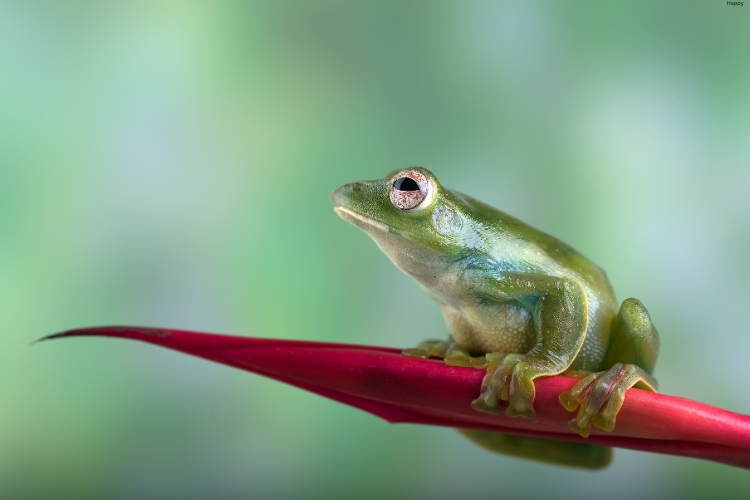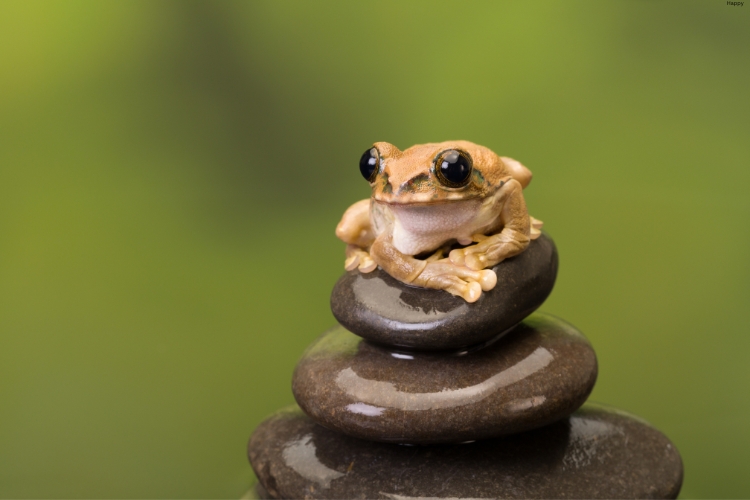Amphibians are fascinating creatures that often surprise us with their diverse appearances. While many people think of frogs as green and salamanders as brown, the world of amphibians is far more colorful than you might imagine.
In blog post, we’ll explore 25 unusually colored amphibians that showcase nature’s incredible palette. From electric blue to fiery red, these creatures demonstrate the stunning diversity of life on our planet.
Why Are Some Amphibians So Colorfully Unusual?
Before we dive into our list, it’s important to understand why some amphibians display such vibrant and unusual colors:
- Camouflage: Some bright colors help amphibians blend in with their surroundings.
- Warning signals: Vivid hues often indicate toxicity, warning predators to stay away.
- Mating displays: Bright colors can attract potential mates.
- Temperature regulation: Certain colors may help amphibians absorb or reflect heat more effectively.
- Species recognition: Unique patterns and colors help individuals identify members of their own species.
The Spectacular 25: A Rainbow of Amphibians
1. Golden Poison Frog (Phyllobates terribilis)
The Golden Poison Frog is not just unusually colored; it’s also one of the most toxic animals on Earth. Its bright yellow skin serves as a warning to potential predators.
Key Features:
- Vibrant golden-yellow color
- Extremely toxic skin secretions
- Native to Colombia
2. Blue Poison Dart Frog (Dendrobates azureus)
With its striking azure blue coloration, the Blue Poison Dart Frog is a true gem of the amphibian world. Despite its name, it’s less toxic than its golden cousin.
Key Features:
- Electric blue body with black spots
- Found in Suriname
- Relatively small, growing to about 2 inches long
3. Strawberry Poison Frog (Oophaga pumilio)
Also known as the Blue Jeans Frog, this amphibian sports a vibrant red body with blue legs, resembling a pair of denim jeans.
Key Features:
- Bright red body
- Blue legs
- Numerous color variations exist within the species
4. Purple Frog (Nasikabatrachus sahyadrensis)
This peculiar amphibian, found in India, has a purple-grey coloration that sets it apart from most frogs. Its unusual appearance has earned it the nickname “pig-nosed frog.”
Key Features:
- Purple-grey skin
- Rounded body with a small head
- Spends most of its life underground
5. Red-Eyed Tree Frog (Agalychnis callidryas)
While its body is primarily green, the Red-Eyed Tree Frog’s vivid red eyes, blue-and-yellow flanks, and orange toes make it one of the most colorful amphibians in the world.
Key Features:
- Bright green body
- Striking red eyes
- Blue and yellow stripes on its sides
6. Chinese Giant Salamander (Andrias davidianus)
Though not brightly colored, the Chinese Giant Salamander’s unusual brown and grey mottled pattern, combined with its massive size, makes it a stand-out amphibian.
Key Features:
- Can grow up to 5.9 feet long
- Mottled brown and grey coloration
- Critically endangered species
7. Axolotl (Ambystoma mexicanum)
These unique salamanders come in several color morphs, including pink, gold, and even albino. Their ability to regenerate lost body parts adds to their unusual nature.
Key Features:
- External gills that resemble a headdress
- Multiple color variations
- Native to Mexico and critically endangered in the wild
8. Tomato Frog (Dyscophus antongilii)
True to its name, the Tomato Frog is a bright red-orange color that resembles a ripe tomato. This Madagascar native uses its vibrant color as a warning to predators.
Key Features:
- Bright red-orange coloration
- Round body shape
- Secretes a sticky substance when threatened
9. Black Rain Frog (Breviceps fuscus)
This grumpy-looking frog from South Africa is known for its unusual dark coloration and perpetually angry expression.
Key Features:
- Nearly black in color
- Round body with a small head
- Known for its “grumpy” appearance
10. Yellow-Banded Poison Dart Frog (Dendrobates leucomelas)
With its striking yellow and black banded pattern, this frog is often likened to a bumblebee. Its bold coloration serves as a warning to predators.
Key Features:
- Yellow body with black bands or spots
- Native to Venezuela and parts of Brazil and Guyana
- Relatively less toxic than some other poison dart frogs
11. Panamanian Golden Frog (Atelopus zeteki)
This critically endangered species is a vibrant golden yellow with dark spots. It’s not just a frog; it’s a national symbol of Panama.
Key Features:
- Bright golden yellow color
- Dark brown or black spots
- Possibly extinct in the wild
12. Vietnamese Mossy Frog (Theloderma corticale)
This frog’s incredible camouflage makes it look like a clump of moss, with a mottled green and brown coloration.
Key Features:
- Textured skin that resembles moss
- Green and brown mottled pattern
- Native to Vietnam
13. Amazon Milk Frog (Trachycephalus resinifictrix)
This large tree frog has a unique blue-grey coloration with dark bands, making it stand out among its green relatives.
Key Features:
- Blue-grey body with darker bands
- Large eyes with horizontal pupils
- Secretes a milky substance when stressed
14. Phantasmal Poison Frog (Epipedobates tricolor)
Despite its small size, this frog’s vibrant red-orange body with cream stripes makes it highly noticeable.
Key Features:
- Bright red-orange body
- Cream or yellow stripes
- Native to Ecuador
15. Ornate Horned Frog (Ceratophrys ornata)
Also known as the Pac-Man Frog, this amphibian has a uniquely patterned body with vibrant green, gold, and brown colors.
Key Features:
- Large mouth and round body
- Intricate pattern of green, gold, and brown
- Native to South America
Table: Comparative Features of 5 Unusually Colored Amphibians
| Species | Primary Color | Habitat | Size | Toxicity Level |
|---|---|---|---|---|
| Golden Poison Frog | Yellow | Rainforest | 2 inches | Extremely High |
| Blue Poison Dart Frog | Blue | Rainforest | 2 inches | Moderate |
| Axolotl | Pink/White/Gold | Freshwater | 6-18 inches | Non-toxic |
| Tomato Frog | Red-Orange | Rainforest | 2.5-3.5 inches | Mild |
| Chinese Giant Salamander | Brown-Grey | Freshwater | Up to 5.9 feet | Non-toxic |
16. Fire-Bellied Toad (Bombina orientalis)
This toad’s name comes from its fiery red or orange underside, which contrasts sharply with its green or brown back.
Key Features:
- Green or brown dorsal side
- Bright red or orange ventral side
- Found in northeastern China, Korea, and parts of Russia
17. Blue-Legged Mantella (Mantella expectata)
This small frog from Madagascar has a striking combination of colors, with a golden body and bright blue legs.
Key Features:
- Golden-yellow body
- Vibrant blue legs
- Critically endangered due to habitat loss
18. Splash-Backed Poison Frog (Adelphobates galactonotus)
This poison dart frog species comes in a variety of solid colors, including orange, yellow, red, and even white.
Key Features:
- Solid color body (various colors possible)
- Native to Brazil
- Relatively large for a poison dart frog
19. Emperor Newt (Tylototriton shanjing)
With its bright orange head and limbs contrasting against a black body, the Emperor Newt is truly a regal-looking amphibian.
Key Features:
- Black body with bright orange head and limbs
- Native to China
- Warty skin texture
20. Cruziohyla calcarifer (No common name)
This tree frog species has an incredible pattern of green, white, and brown that resembles lichen growing on tree bark.
Key Features:
- Complex pattern of green, white, and brown
- Large eyes with vertical pupils
- Found in Central and South America
21. Malayan Horned Frog (Megophrys nasuta)
While not brightly colored, this frog’s leaf-like appearance and unusual horn-like protrusions make it a standout.
Key Features:
- Leaf-like appearance for camouflage
- Horn-like protrusions above eyes
- Found in Southeast Asia
22. Anderson’s Crocodile Newt (Echinotriton andersoni)
This newt has a striking orange-brown coloration with black spots and a rough, spiny skin texture.
Key Features:
- Orange-brown color with black spots
- Rough, spiny skin
- Native to Japan and China
23. Peacock Tree Frog (Leptopelis vermiculatus)
This frog has a beautiful pattern of green and gold that resembles the intricate designs on a peacock’s feathers.
Key Features:
- Intricate green and gold pattern
- Large eyes
- Native to Tanzania
24. Marbled Salamander (Ambystoma opacum)
The Marbled Salamander’s striking black and white pattern sets it apart from many other salamander species.
Key Features:
- Black body with white or silvery crossbands
- Stocky body shape
- Found in eastern United States
25. Golden Mantella (Mantella aurantiaca)
We conclude our list with the Golden Mantella, a tiny frog with a uniform, brilliant orange-gold color.
Key Features:
- Bright orange-gold coloration
- Very small size (less than an inch long)
- Critically endangered and native to Madagascar
Conclusion
These 25 unusually colored amphibians demonstrate the incredible diversity and beauty of nature. From the toxic warnings of poison dart frogs to the camouflage of mossy frogs, each species’ coloration serves a unique purpose.
As we marvel at these colorful creatures, it’s crucial to remember that many are endangered due to habitat loss, climate change, and other human activities.
By appreciating and protecting these amazing amphibians, we can ensure that future generations will also have the chance to wonder at nature’s vibrant palette.
Whether you’re a nature enthusiast, a budding herpetologist, or simply someone who appreciates the beauty of the natural world, these colorful amphibians serve as a reminder of the importance of biodiversity and conservation.
Remember, if you ever encounter these animals in the wild, admire them from a distance. Many amphibians have delicate skin that can be harmed by human touch, and some may be dangerous to handle.
Let’s work together to protect these living rainbows and preserve the colorful diversity of our planet’s amphibians.


